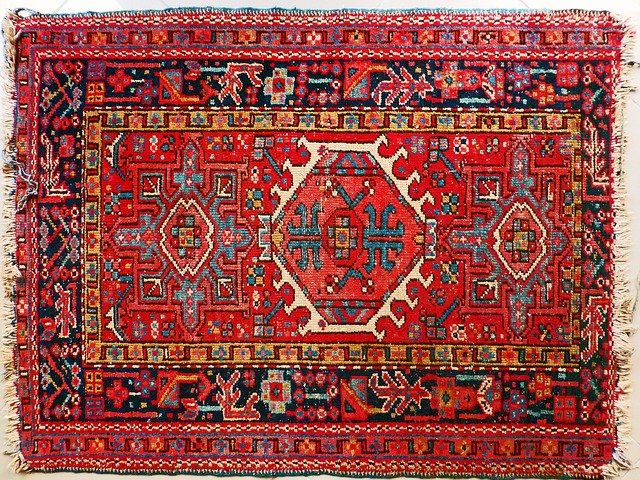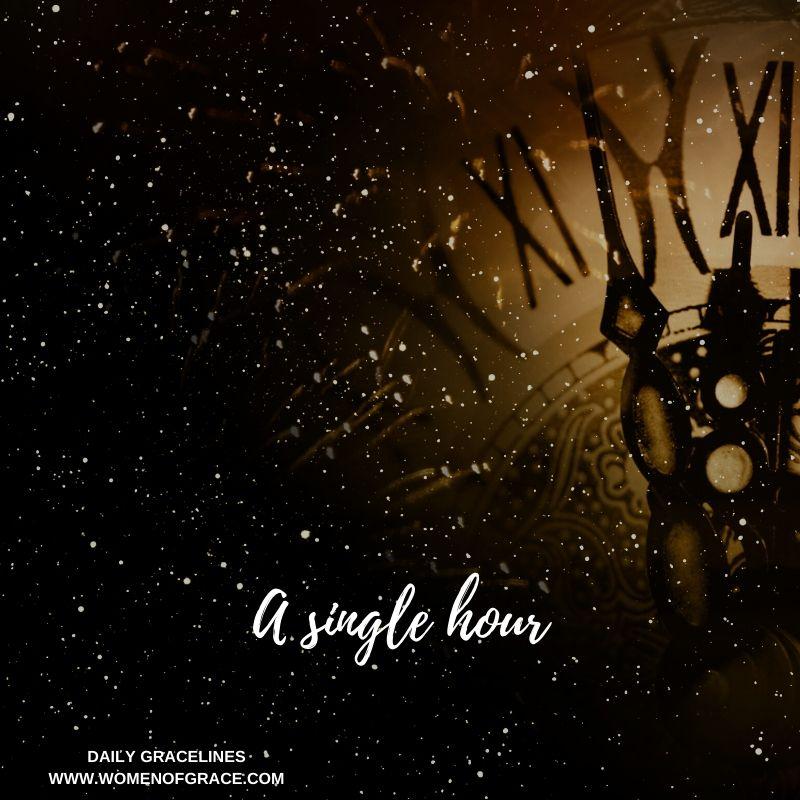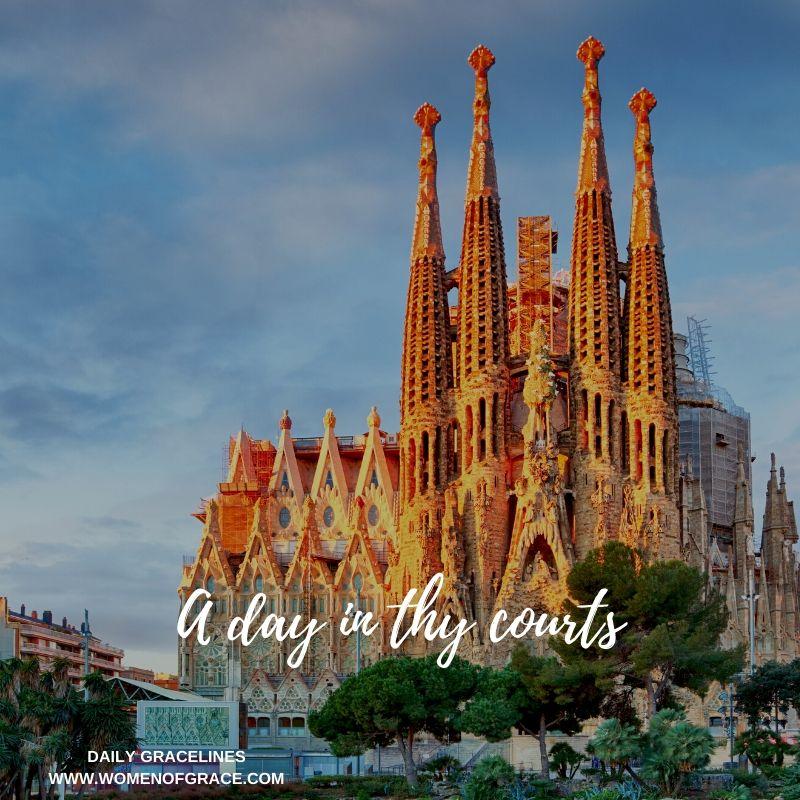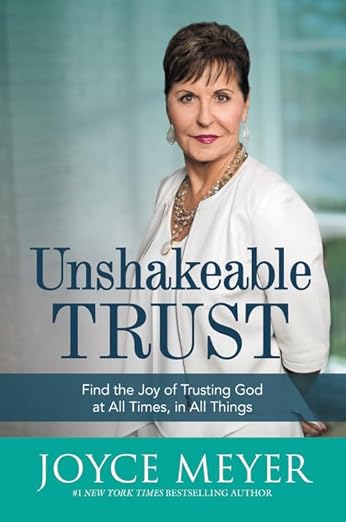
If you enjoy Daily Gracelines, please prayerfully consider making a donation to support and sustain our apostolate so that we may continue to provide this and all of our resources designed to nourish and grow your Catholic faith.
DONATE

If you enjoy Daily Gracelines, please prayerfully consider making a donation to support and sustain our apostolate so that we may continue to provide this and all of our resources designed to nourish and grow your Catholic faith.
DONATE

If you enjoy Daily Gracelines, please prayerfully consider making a donation to support and sustain our apostolate so that we may continue to provide this and all of our resources designed to nourish and grow your Catholic faith.
DONATE
 GS writes: “I have heard that there are secret symbols in oriental area rugs that are associated with non-Christian religions. Is this true, and is it okay to have them in our homes?”
GS writes: “I have heard that there are secret symbols in oriental area rugs that are associated with non-Christian religions. Is this true, and is it okay to have them in our homes?”
It is true that a variety of symbols with non-Christian religious meaning can be found in oriental area rugs, but these symbols (which are not entirely secret) are used to tell a story more than to persuade purchasers into adopting religious beliefs. This is why it is safe to have these rugs in our home.
Area rugs that are referred to as “oriental” typically come from the Asiatic region such as Central Asia, Pakistan, Afghanistan, Iran, Turkey, India, and China. These rugs are hand-knotted with some rugs containing more than three million knots depending on the size.
According to this site, rugs that feature floral designs tend to come from areas in Persia and India while Turkish rugs tend toward geometric designs. Chinese rugs favor images of dragons and birds. The choice of design has very much to do with the religious beliefs of the region:
“Most creatures possess symbolic meaning, and in China the dragon represents imperial power and also has strong associations with Confucianism. In Persia, however, the dragon symbolizes evil; in India, death. Scenes of fighting animals on Oriental rugs typically represent the struggle between good and evil,” the site explains.
Symbols such as the cypress tree represent mourning or immortality while the palm or coconut signify blessing. A pony symbolizes wealth and the universal knot represents wisdom and immortality.
“Because the Prophet Mohammed (PBUH) spoke against the artistic representation of humans and animals, geometric patterns often dominate the designs of Muslim artists,” the site continues. “Although Persia embraced the Islamic Shiite religion, the area’s rug-makers often continued to decorate their creations with lively animal and human figures in dream-like surroundings. On the other hand, it is quite rare to find any animal or human figures on early Turkish rugs. Turkish prayer rugs are characterized by rich and minutely detailed decoration. Found on all prayer rugs is the arched mehrab, or prayer niche, which is pointed to Mecca when the rugs are used in prayer.”
Although the use of rugs is not nearly as important in the Christian religion, there is evidence of hand-woven textiles featuring Christian themes throughout history.
This site, which evaluates and traces the history of oriental rugs, explains: “In an early Christian sect known as the Coptics, these individuals produced textiles from wool or linen and used them in religious burial ceremonies.”
In the Jewish faith, rugs are used by Orthodox Jews on Yom Kippur to kneel and bow upon.
“While it’s not always shared among every Jewish sect, the practice of using these rugs is part of what’s considered prostration, where individuals put their backsides near the ground and lower themselves for a period of prayer,” the site explains. “In some synagogues, rugs are also used to sit upon instead of chairs or benches such as in the Karaite community.”
In the Buddhist culture, hand-woven rugs were used by prominent religious figures.
“One of the more unique elements of Buddhist rugs is their use of shocking designs, as they sometimes depict what many Westerners would term as shocking in nature, including flayed animal and human skins. The reason behind these designs is the Buddhist’s pursuit of bodily detachment and the search for a higher level of consciousness. Other motifs that can be present on these rugs are Lotus blossoms, indigenous flowers, local wildlife or mandala-like designs.”
In the New Age and the occult, there are some who believe in what Carl Jung taught about symbols – that they are a communication of the unconscious. “A concrete image is a manifestation requiring space in which the spirit clothes itself in the material in order to draw to man. Images and numbers are doors through which the spiritual can reach man (Carl Jung, Conversations with C.G. Jung).”
However, this is far from a mainstream belief and although there is a chance that some of the manufacturers of these rugs might subscribe to these beliefs, it is very unlikely.
Enjoy your oriental rug!
© All Rights Reserved, Living His Life Abundantly®/Women of Grace® http://www.womenofgrace.com

If you enjoy Daily Gracelines, please prayerfully consider making a donation to support and sustain our apostolate so that we may continue to provide this and all of our resources designed to nourish and grow your Catholic faith.
DONATE

If you enjoy Daily Gracelines, please prayerfully consider making a donation to support and sustain our apostolate so that we may continue to provide this and all of our resources designed to nourish and grow your Catholic faith.
DONATE

If you enjoy Daily Gracelines, please prayerfully consider making a donation to support and sustain our apostolate so that we may continue to provide this and all of our resources designed to nourish and grow your Catholic faith.
DONATE
Dear Friends,
Today I received the graphic below from a friend. It speaks a word of encouragement and exhortation to us in light of today’s political situation. I read it on the air during our radio broadcast, Women of Grace Live, heard at 11AM ET VIA EWTN. A caller asked me to post it, so here it is. May these words bolster your faith in our God for Whom nothing is impossible,
Blessings and joy in Jesus,
Johnnette
 MH writes: “I have a very good friend that absolutely adores Joyce Myers. Am I right to say she’s another prosperity gospel teacher? I’ve heard some of her talks before, and the only thing I can discern, is that as a Protestant, she interprets Scripture differently from us Catholics, which I know is to be expected. She speaks on topics that one could easily relate to; such as, how it’s wrong to talk about others behind their back. Is it okay to listen to her, if I remember that her interpretation of scripture is wrong? Or is there more I should know so as to not listen to her?”
MH writes: “I have a very good friend that absolutely adores Joyce Myers. Am I right to say she’s another prosperity gospel teacher? I’ve heard some of her talks before, and the only thing I can discern, is that as a Protestant, she interprets Scripture differently from us Catholics, which I know is to be expected. She speaks on topics that one could easily relate to; such as, how it’s wrong to talk about others behind their back. Is it okay to listen to her, if I remember that her interpretation of scripture is wrong? Or is there more I should know so as to not listen to her?”